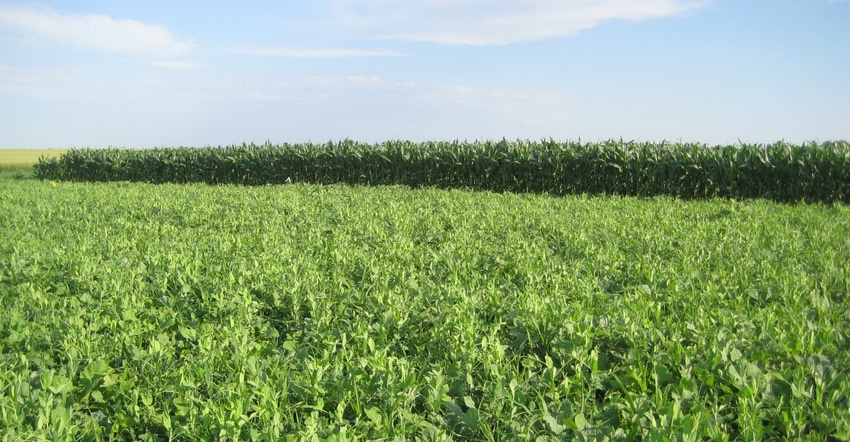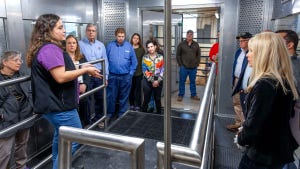USDA adjusts Nov. 1 harvest date for cover crops on prevented plant acres to Sept. 1.

Farmers who planted cover crops on prevented plant acres will be permitted to hay, graze or chop those fields earlier than November this year, the U.S. Department of Agriculture announced Thursday. USDA’s Risk Management Agency (RMA) adjusted the 2019 final haying and grazing date from Nov. 1 to Sept. 1 to help farmers who were prevented from planting because of flooding and excess rainfall this spring. With a historically challenging and difficult planting season, farmers and ranchers appreciate the needed flexibility being granted by RMA.
“We recognize farmers were greatly impacted by some of the unprecedented flooding and excessive rain this spring, and we made this one-year adjustment to help farmers with the tough decisions they are facing this year,” undersecretary for farm production and conservation Bill Northey said. “This change will make good stewardship of the land easier to accomplish while also providing an opportunity to ensure quality forage is available for livestock this fall.”
RMA has also determined that silage, haylage and baleage should be treated in the same manner as haying and grazing for this year. Producers can hay, graze or cut cover crops for silage, haylage or baleage on prevented plant acres on or after Sept. 1 and still maintain eligibility for their full 2019 prevented planting indemnity.
“These adjustments have been made for 2019 only,” RMA administrator Martin Barbre said. “RMA will evaluate the prudence of a permanent adjustment moving forward.”
The move was welcomed by members of Congress as well as agricultural groups.
“This year’s problematic weather and disasters have created a unique set of challenges for dairy producers for whom feed availability is a critical issue,” Jim Mulhern, president and chief executive officer of the National Milk Producers Federation (NMPF), said, thanking USDA “for taking important steps to ease the feed crisis that farmers are facing in multiple regions of the country.”
Zippy Duvall, president of the American Farm Bureau Federation, added, "This is an incredibly important change to ensure livestock producers have the necessary feed to properly care for their animals throughout the rest of this year.”
“I’m thrilled USDA acknowledged concerns from producers, recognized the need for flexibility on prevent plant acres and acted swiftly,” Rep. Dusty Johnson (R., S.D.) said. “This simple change will provide much-needed relief and will allow producers to get the feed they desperately need for their cattle.”
Last week, Johnson and Rep. Angie Craig (D., Minn.) introduced the bipartisan Feed Emergency Enhancement During Disasters Act (FEEDD Act), which would create an emergency waiver authority for USDA to allow producers to graze, hay or chop a cover crop before Nov. 1 in the event of a feed shortage due to excessive moisture, flooding or drought. With this waiver, producers would not have to take a further discount on their crop insurance.
The FEEDD Act received immediate support from 28 bipartisan co-sponsors in the House of Representatives and more than 17 national agriculture groups.
During a House Agriculture Committee subcommittee meeting on Thursday, Craig asked witnesses about the proposal to address the anticipated shortage of forage supplies.
Michael Davenport, chairman of the American Association of Crop Insurers and chief operating officer at Rain and Hail LLC, said moving the date to Sept. 1 rather than the often-used date of Oct. 1 would offer more assistance for producers in Minnesota and South Dakota.
He said in regard to a more permanent solution, like what's proposed in the FEEDD Act, it would require ensuring that the USDA secretary can determine if there is a feed shortage and do so in a consistent fashion.
Brandon Willis, assistant professor at Utah State University and former RMA administrator, said the agency has come a long way in making sure crop insurance works in concert with cover crops. He said Congress needs to spend time looking at ways to balance prevented planting with cover crops to allow for a steadier policy going forward.
About the Author(s)
You May Also Like



.png?width=300&auto=webp&quality=80&disable=upscale)

